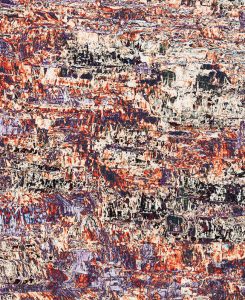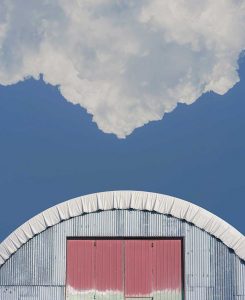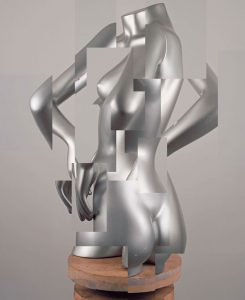Radetzkymarschen 2
År 1848 betvingade Josef Radetzky, fältmarskalk av Österrike-Ungern, italienarna vid Santa Lucia (6 maj), Curtatone (29 maj), Vicenza (11 juni), Palmanova (25 juni), Custoza (23–25 juli). Samma år skrev Johann Strauss den äldre en glättig militärmarsch tillägnad fältmarskalken och hans segrar. Man dansar till den ännu idag.
En dekonstruktion av makt eller jaget. Bilderna som är tagna i Wien har berövats de mäktiga män som står staty på socklarna.
»När ni raserar statyer, spara socklarna.
De kan komma till användning.«
– S. J. Lec
The title ”The Radetzky March” is referring to the marshal Joseph Radetzky from Austrian-Hungarian empire, the great military leader — but also to the march composed by Johann Strauss I in his honour, and also to the book by Joseph Roth about the demise of the Austro-Hungarian empire. One could see the images as a deconstruction of power, or of the patriarchal world, but also in Freudian terms, as a deconstruction of the ego. The images have been stripped of the mighty, that stand on the pedestals. All images are taken in Vienna. They are shot in colour, printed on transparent film, then cut out (scissors and scalpel) and scanned. The last retouching and colouring was done digitally.
| Upplaga: | 8 |
| Storlek: | 100 x 87 cm |
| Bildyta: | 100 x 87 cm |
| Teknik: | Fotografi c-print |
| Årtal: | 2019 |
| Leverans: | Enl ök |
Beskrivning
År 1848 betvingade Josef Radetzky, fältmarskalk av Österrike-Ungern, italienarna vid Santa Lucia (6 maj), Curtatone (29 maj), Vicenza (11 juni), Palmanova (25 juni), Custoza (23–25 juli). Samma år skrev Johann Strauss den äldre en glättig militärmarsch tillägnad fältmarskalken och hans segrar. Man dansar till den ännu idag.
En dekonstruktion av makt eller jaget. Bilderna som är tagna i Wien har berövats de mäktiga män som står staty på socklarna.
»När ni raserar statyer, spara socklarna.
De kan komma till användning.«
– S. J. Lec
The title ”The Radetzky March” is referring to the marshal Joseph Radetzky from Austrian-Hungarian empire, the great military leader — but also to the march composed by Johann Strauss I in his honour, and also to the book by Joseph Roth about the demise of the Austro-Hungarian empire. One could see the images as a deconstruction of power, or of the patriarchal world, but also in Freudian terms, as a deconstruction of the ego. The images have been stripped of the mighty, that stand on the pedestals. All images are taken in Vienna. They are shot in colour, printed on transparent film, then cut out (scissors and scalpel) and scanned. The last retouching and colouring was done digitally.
Ytterligare information
| Ram | Ek lådram, Pris utan ram, Svart lådram, Valnöt lådram, Vit lådram |
|---|




